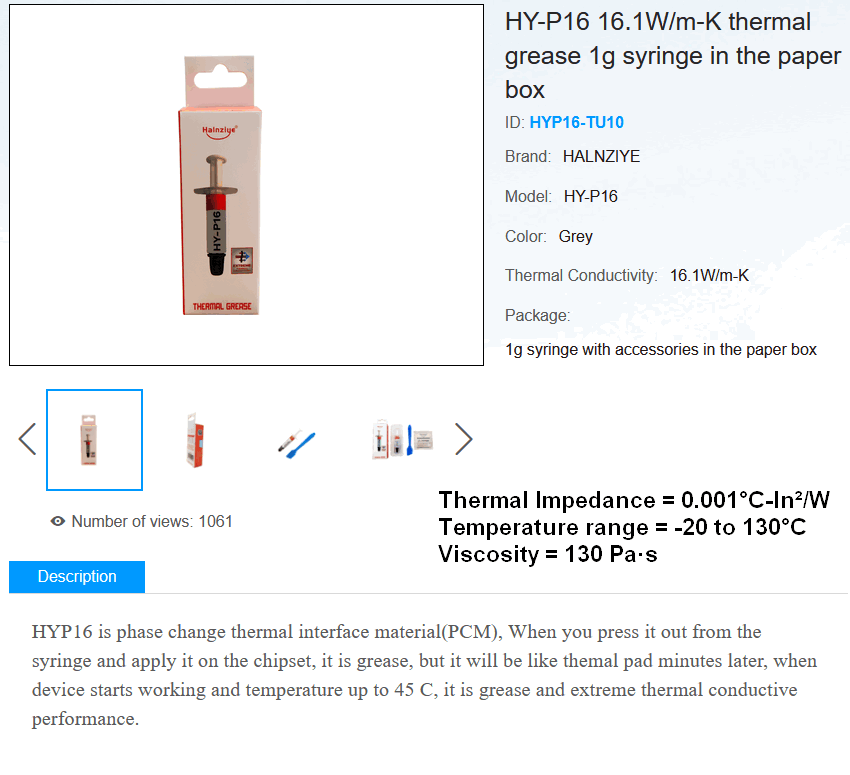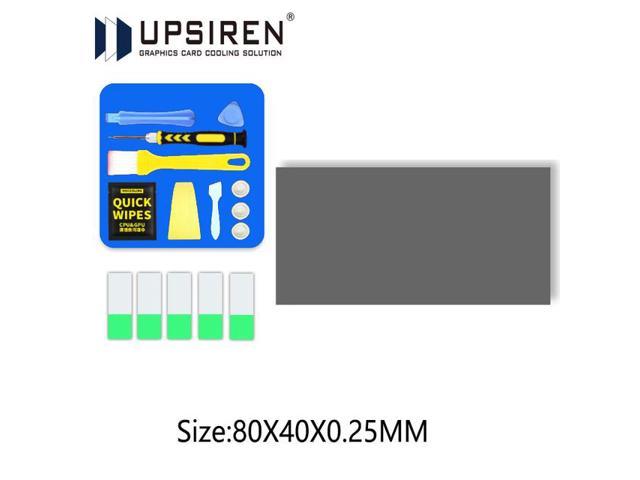This reasoning is based on the assumption that the soild/oil interface has no thermal resistance, I don't think this is the case; as the surface area increases so also does the thermal resistance (I don't think air bubbles play a role). Typically themal greases use metal oxides, not metals
Thermal paste - Wikipedia
Der8auer Rants About Misleading W/mK Marketing (Thermal Conductivity) - YouTube
6:20
"If you increase the particle size then you will also increase thermal conductivity."
5:20
Concering IC diamond
"and then they perform the same as..."
Here is some rough and ready reasoning: in the densest sphere packing, 26% is empty space (in this case oil) and this is regardless of the sphere size; so one might expect the thermal conductivity not to depend on grain size... unless surface effects were significant; bigger grains lead to less overall surface area.
So....you are missing part of the point here. Let me step the logic.
Atoms are modeled as roughly spherical regions (center of neutrons and protons, electron cloud).
A solid mass of metal is simply a collection of atoms.
If you have an "infinitely" fine substance you assume it's atomized.
Atomized metal is the same as a solid metal, assuming that the atomized solid has no impurities.
In an oxygen free environment you can actually weld steel together once cleaned. The surfaces placed against each other functionally form a new solid...and weld at basically no energy cost.
I used the example of sintering because it's taking a finely powdered metal, heating it up below the melting point, and having those fine powdered bits sinter together in a solid matrix which is not a solid but creates and interconnected web that acts as a solid. The impregnation of those open areas with something less dense makes a lower density solid...thinking stainless steel powder and a copper compound impregnating it. Alternatively, if you fill it with an oil you have a metal which "bleeds" oil over time and self lubricates.
All of this is functionally what he's saying. The less spaces occupied with poorer conductors the better you conduct... which should be common sense? I am asking you what I'm missing with regards to this being common sense...and your response back to me is a fundamentally incorrect assertion about packing efficiency. You are understanding that packing efficiency is a thing...but because you are still pretending that atoms are largely nothing there's a fundamental gap to bridge between atoms and macroscopic packaging efficiencies...which is simply your macro mind not making the micro leap (excusing the puns, humans often have issues understanding things huge and tiny due to a lack of scale references).
If you want a visual check here:
Atomic packing
I'm just baffled that this statement raises anyone's eyebrows...and moreover concerned that how it's being forwarded is part of the reason why. I...find it funny that after watching this as a "revelation" I'd really only consider this a thermo 101 course... Maybe it's because I went to a school that was heavy into math and science...but I also remember this is high school physics. Maybe it's just me being unreasonable.
As a rule, it's not supposed to. However, if impurities are leeched out of the heatsink or IHS, it can happen. Chemistry/Metallurgy is funny like that. Remember, some metals are porous and can bleed/leech certain materials under certain circumstances. Liquid metals tend to be a sponge as well. The process usually takes a year or more to take effect. However, as long as good contact is made, heat transfer is not affected.
Um, yes it can, it's just not common for most use-case-scenario's. I've only ever seen it once and it was a combination of the IHS and the heatsink having aluminium content which was leeched into the LM TIM and caused it to solidify. It was still easily removed, but the CPU IHS had to be removed and a new heatsink used. After going bare die, the system in question was back up and running without skipping a beat and could OC a bit better.
So...
I think that a lot of this is fun. Your comment is...something that is often not considered. Aluminum is not porus, but when aluminum and gallium meet the gallium replaces aluminum atoms inside the crystal structure of the metal. It makes the aluminum brittle, and due to infiltration can basically degrade the structure to the point of falling apart. Most of the higher end "liquid metal" alloys use at least some content of gallium to remain liquid at room temperature...so there's a great possibility that someone can stick an aluminum block onto a patch of liquid metal and see a large aluminum heatsink literally fall apart over time.
If you're looking for actually porus metals then you're looking for a sintered component. Porus is not the same as infiltrating...because infiltration will happen with basically nothing more than a non-oxidized surface.
The other bit of fun with metals is sacrificial anodes and metal interface interaction. Basically, one metal donates electrons to another becoming a cathode and anode. The anode experiences oxidation, expedited by the metal surface interaction. Think the steel in the San Francisco bridge having a bunch of zinc anodes buried on either side to prevent rusting.
I love the fact that we've made so many steps forward, but the answer to this is all still bespoke. That is, if you could grind the two surfaces in the same way you'd need very little interface material...but the joy of mass production is that tolerances mean that each produced unit is "within tolerance" so we have to make up for it with TIM.
I've professionally been in a grind shop. Stretching sheet metal is not exactly high tolerance, but the gap between the shearing surface and blade is in the thousandths of an inch. If the dies weren't ground well they'd mash and shear the sheet metal instead of stretching it. Each die set was ground together, more than three times, to remove any chunks or inconsistencies. I managed to clear a small heatsink in the same way for a PLC...and it went from an overheating mess to surprisingly reliable and quiet. Never shared the solution...but the contractors kept asking how we didn't have the thing in the shop every other week. It's surprising how "within tolerance" can often be such a problem.
Anecdotal, I know. That said, it's basically confirmation about how laping can help...even if my personal belief is that we mostly do well enough not to need the few degrees it offers for most good setups...








